To complement our series of QuickReads covering measurement, we will now explore Failure Demand (FD).…

ChangeWise QuickRead : What is a SIPOC and when should I use one?
When starting an improvement project, have you ever struggled to agree which elements of your business processes are relevant and in scope? This is a common issue for many of our clients at ChangeWise, and we often suggest using a SIPOC diagram to help.
Where did the SIPOC tool originate?
SIPOC originates from the 1980s and forms part of the total quality movement.
What is a SIPOC?
SIPOC stands for Supplier, Inputs, Process, Outputs, Customer. It is a structured approach to providing a high-level overview of the scope of a project and is a variant of process mapping.
What are the benefits of using a SIPOC?
The SIPOC acts as a high-level visual management tool for ensuring the project team have a holistic view of the process, and more importantly, for the purpose of project scope – where the process starts and where it finishes.
It also encourages the team to think about and agree who the internal and external customers are, and who supplies into a given process. It can help to highlight any inputs and outputs that have potential gaps or are simply unnecessary (Non-Value-Add).
How do I create a SIPOC for my business process?
A SIPOC is best created as a brainstorming exercise in a team setting. Post-It notes are great, as they allow the team to remove/reorder steps as the various elements are agreed.
As an example, imagine we have a process in our organisation that uses a courier to deliver a product to clients. The example below looks at the complaints process for delivery issues.
Step 1: Process
Agree where the process starts and finishes. This should be 4-5 high-level steps – it is important that the team agree on this:
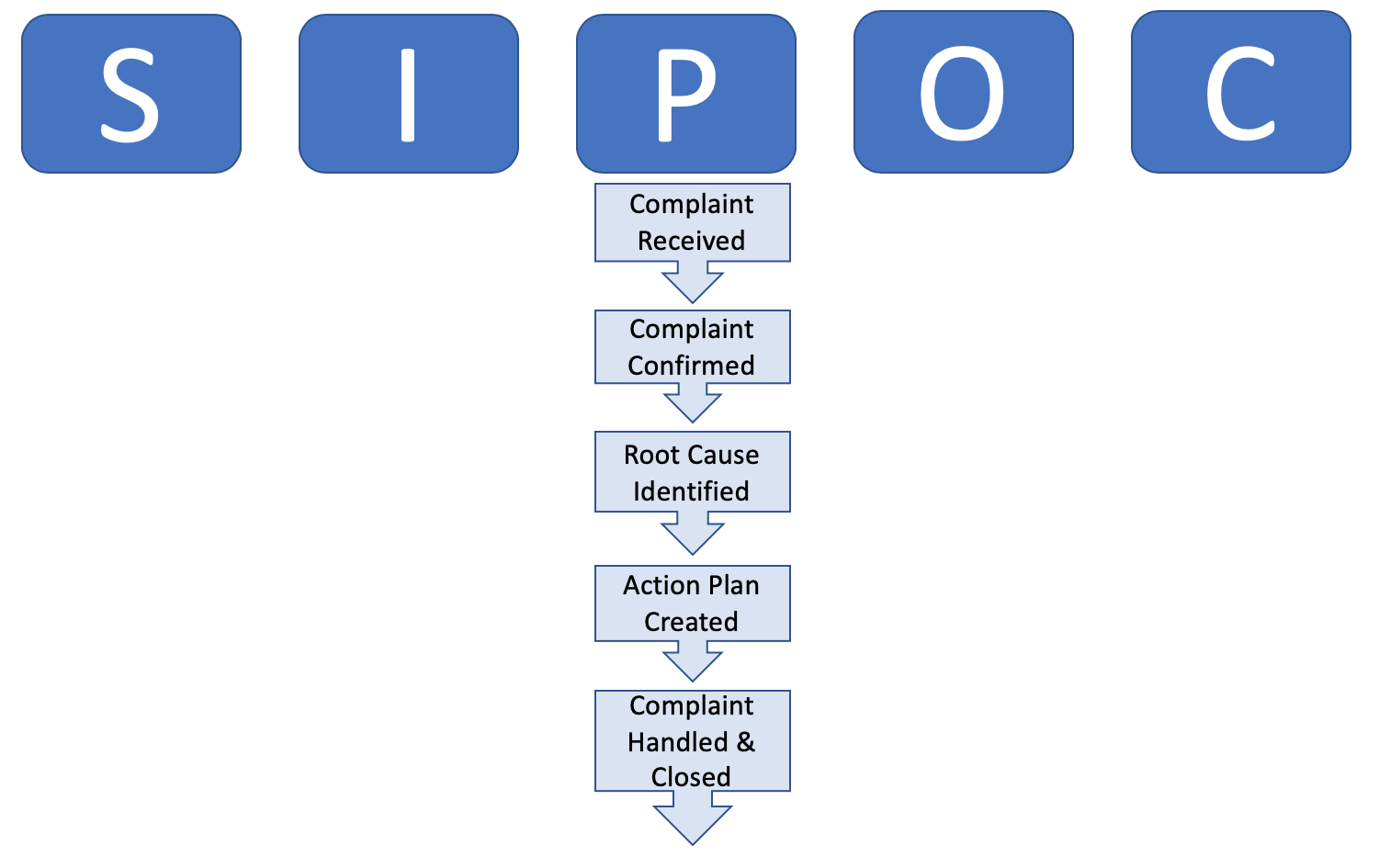
Step 2: Define the outputs of each process step.
This could be approvals, paperwork, data, reports, emails, calls – anything created as a result of the process step.
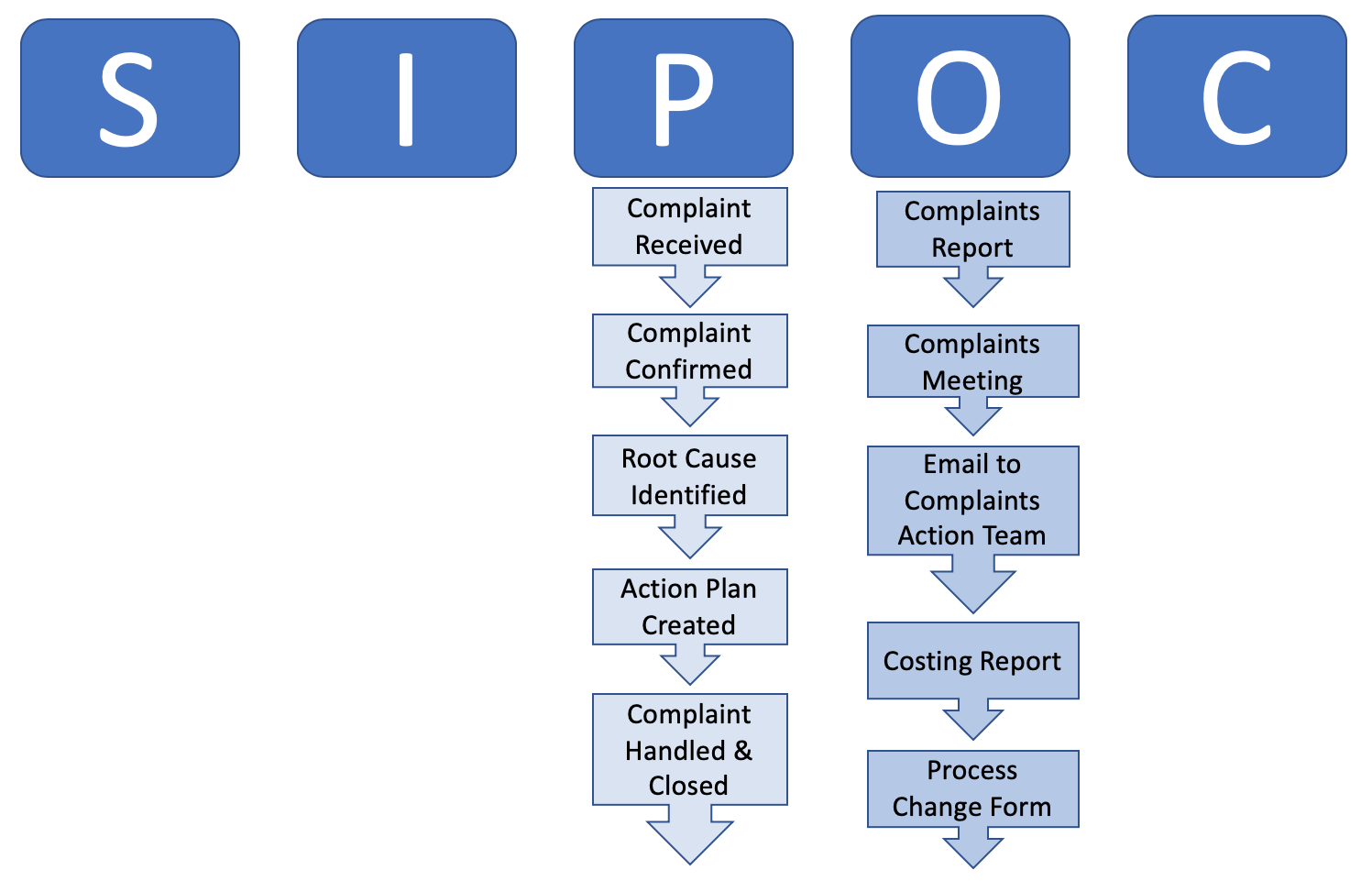
Step 3: Agree the customers in the process:
This includes external and internal customers affected by the process and outputs. Each process step should have at least one customer.
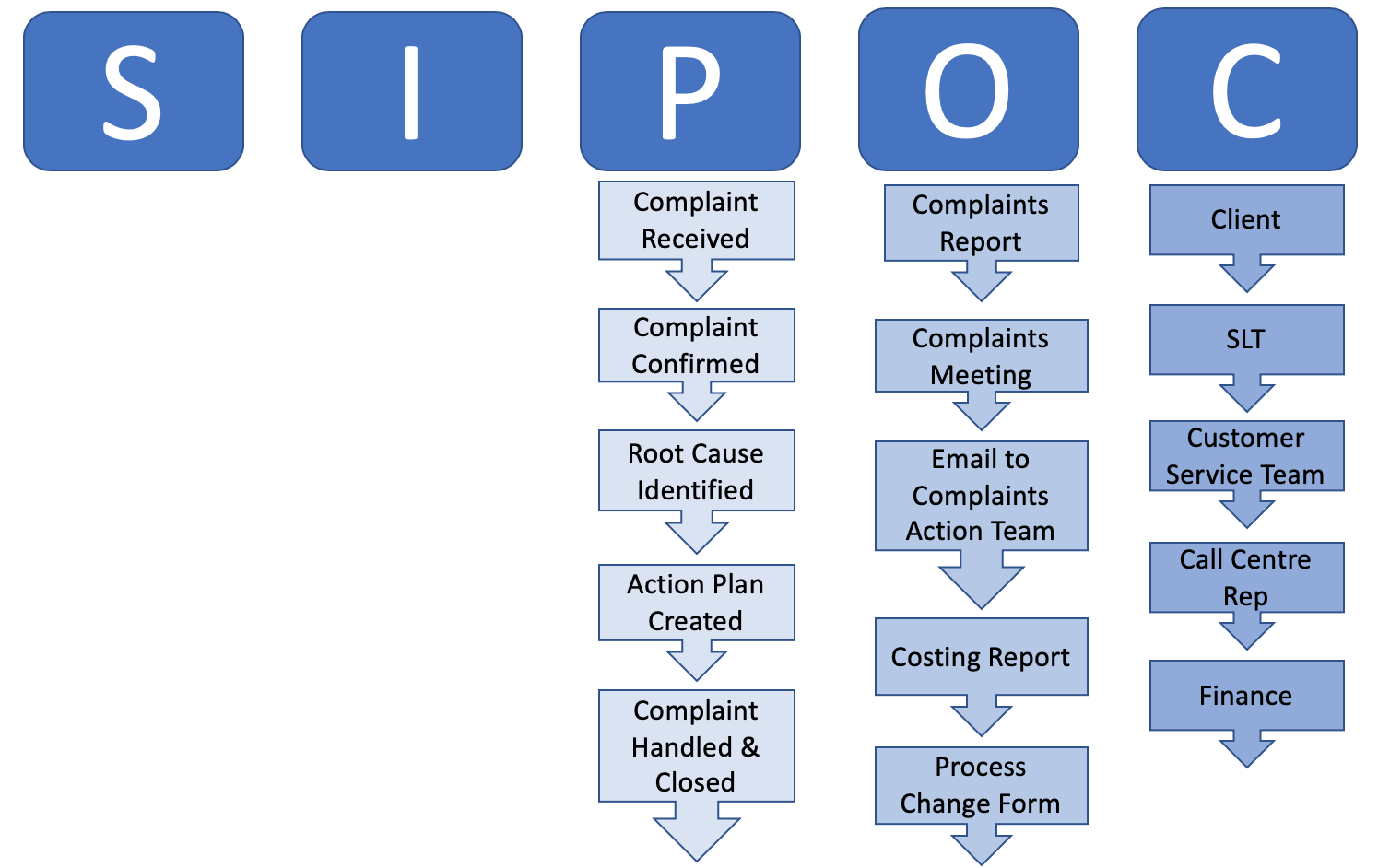
Step 4: Identify the inputs:
This could be people, machines, materials or reports – anything that triggers the process.
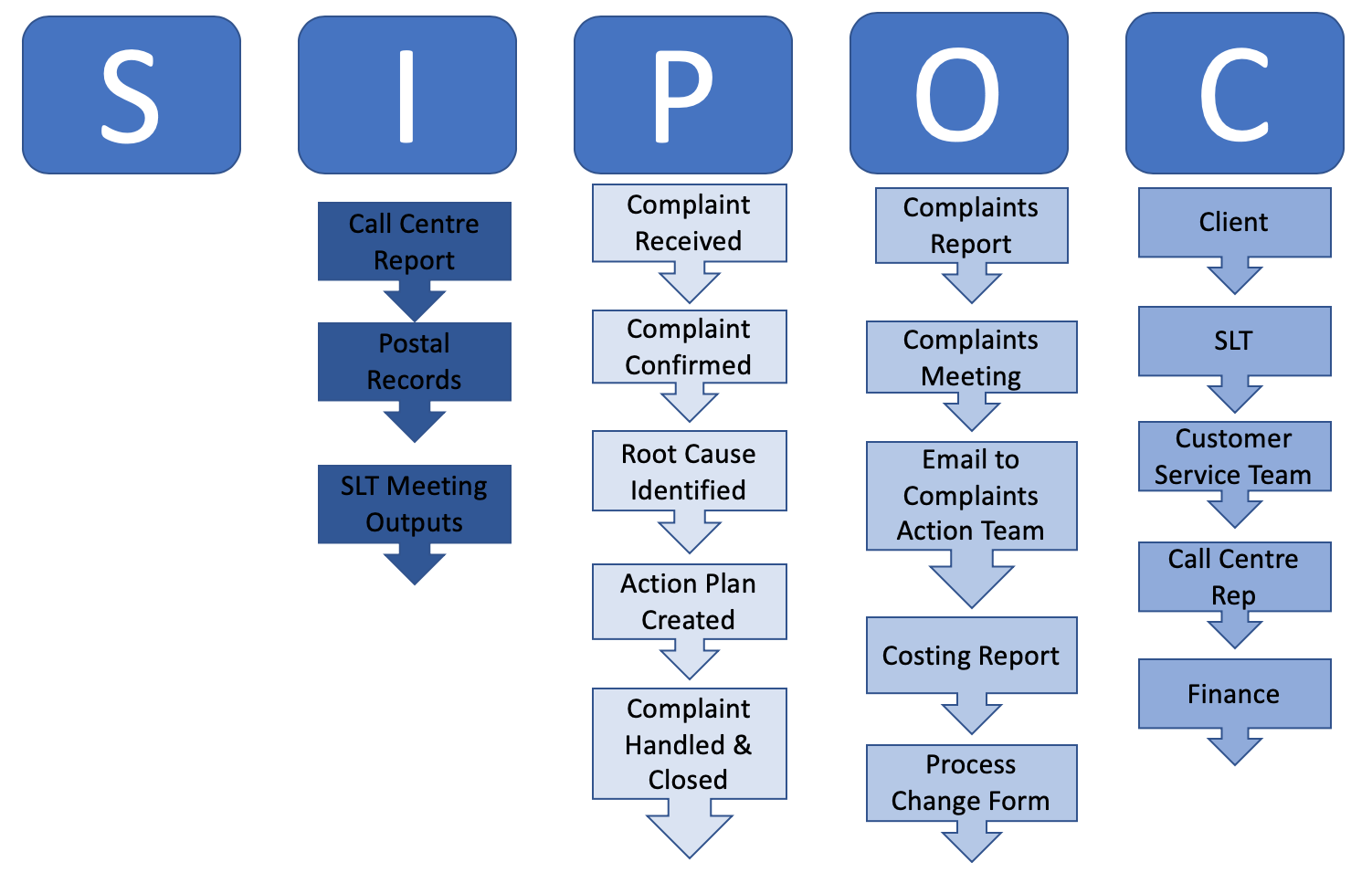
Step 5: List all those who supply into the process:
Anyone who triggers or impacts an output should be listed here.
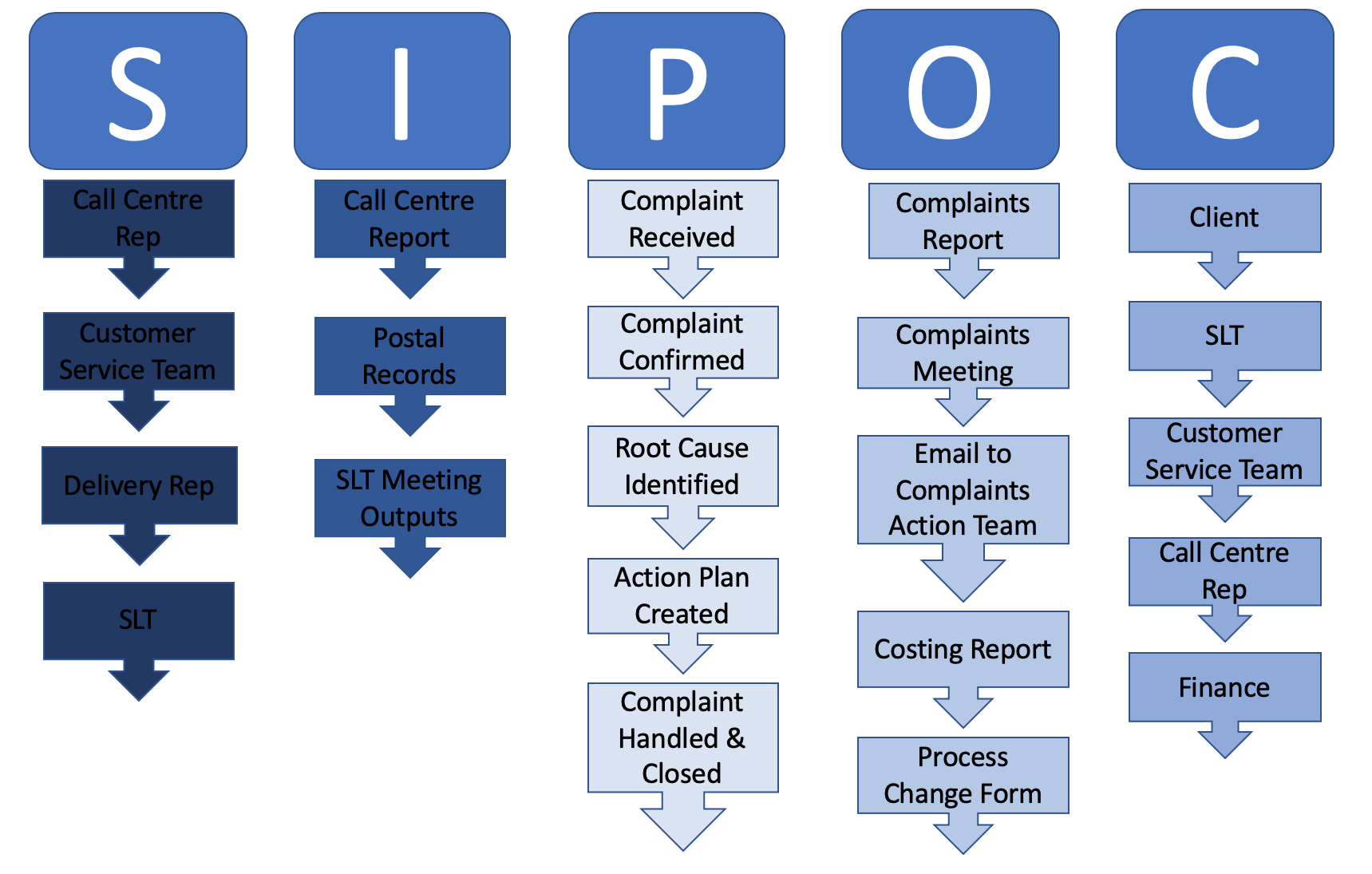
In Summary
A SIPOC acts a great technique for mobilising projects, agreeing scope and ensuring the project team are aligned. It creates a holistic view of an operation and acts as a great problem-solving tool as well as forming the basis of a plan to walk the process (Gemba).
Want to learn more about creating a SIPOC to help define the scope for your process improvement project? Contact us at info@changewise.co.uk
ChangeWise believes employee engagement is the foundation for successful Change. Training and coaching your people to use simple continuous improvement techniques will enable your organisation to continuously adapt and stay ahead in a constantly changing and challenging environment.
For updates and interesting Lean Change insights, connect with us on LinkedIn.
Find out more about our Public Training Courses



